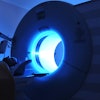SAN FRANCISCO - CT can detect smaller lung malignancies and thus improve survival rates, but do the benefits of early screening outweigh the risks? Two clinicians debated the merits and the drawbacks of lung cancer screening Monday at Chest 2000, sponsored by the American College of Chest Physicians.
Dr. Daniel Libby from Weill-Cornell Medical Center in New York City noted the benefits of screening with CT. Libby is part of a multidisciplinary team conducting the Early Lung Cancer Action Project (ELCAP), a study designed to evaluate baseline and annual repeat screening by low-dose CT in people at high risk of lung cancer (The Lancet, July 10, 1999, Vol.354:9173, pp.99-105).
"We did a single cohort of 1,000 subjects who we did baseline and one-year repeat screenings on. There were three probabilities that we sought: The probability of finding a nodule, the probability of finding cancer, and the probability of finding a cure," Libby explained.
In contrast to other cancers, malignant lung metastases have the highest yearly incidence and the highest mortality rate, Libby said. And unlike conventional x-ray, CT has been shown to catch 82% of these cancers at stage I.
"We believe that if we can find early stage I lung cancers with CT, we can cure the vast majority of patients," he said.
Libby highlighted results of various lung cancer screening projects that have been conducted since the 1970s, such as the Mayo Lung Cancer Project. In that study, patients who underwent chest x-ray and sputum cytology every four months had a five-year survival rate that was 33% higher than a control group that underwent only annual chest radiographs. In addition, 51% of the cancers were classified as stage I.
By comparison, in the ELCAP study, 82% of the lung cancers were caught at stage I, or less than 2 cm in size, using repeat screening with high-resolution CT. Only 26% of the lesions registered as positive on chest x-rays.
"We see that a CT screening is four times as powerful as chest x-ray in detecting lung cancer," Libby said. "As the size of the lesion gets smaller, the survival rate increases."
Finally, CT had a low false-positive rate. In ELCAP, biopsies in 15 patients revealed only one benign lesion and 13 malignancies (one patient refused the procedure).
While CT's cost-effectiveness is still theoretical, a commentary in the Canadian Medical Association Journal by Dr. Olli Miettinen from McGill University in Montreal estimated that the cost of annual CT screening would be less than $10,000 per life-year saved. Based on ELCAP, the cost of baseline annual and repeat CT screening would be less than $2,000 per life-year saved (Canadian Medical Association Journal, May 16, 2000, Vol.162:10, pp.1431-1436).
"Screening leads to better survival. The lesson here is that we have to keep screening for lung cancer," Libby concluded, adding that future studies on CT screening should focus on the length and frequency of screening periods.
But is it worth prolonging survival if screening has not been proven to affect mortality rates?, asked Dr. Joseph Govert of Duke University Medical Center in Durham, NC, in his counter-argument.
"Improved survival does not necessarily mean that patients are living longer," he said. "It just means that they know they have a terrible disease for a longer period of time."
Govert said his main problem with the studies Libby cited is that even though patients had better survival rates, they did not have better mortality rates than patients who were not screened.
"None of the trials found a decrease in lung cancer mortality," he said. "How can that be? How can survival be better but mortality is the same? I think that it comes to an overdiagnosis bias."
Govert said that overdiagnosis, lead-time, and length biases are the acknowledged weaknesses of screening studies. Because CT screening assumes that smaller lesions have a better prognosis, overdiagnosis is a pitfall.
In a retrospective trial at Duke, the records of 510 patients with stage I lesions were reviewed, Govert said. The investigators found no survival difference between patients with 3-cm lesions and those with lesions smaller than 1 cm.
Lead-time bias ensures that survival in the screening group will always be better than in the control group, he said, because screening "turns well patients into sick patients."
Length bias becomes an issue because screening does not account for the rate of disease progression. Because screening generally finds patients who have more slowly progressing disease, there is once again a tendency to overrate survival, he said.
Proving that the benefits of screening outweigh the drawbacks would require a randomized control trial similar to those used to test the validity of mammography screening, Govert said. In addition, disease-specific mortality rates, rather than survival rates, would have to be the end goal.
By Shalmali PalAuntminnie.com staff writer
October 24, 2000
Let AuntMinnie.com know what you think about this story.
Copyright © 2000 AuntMinnie.com



















